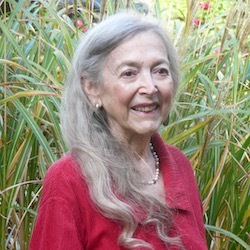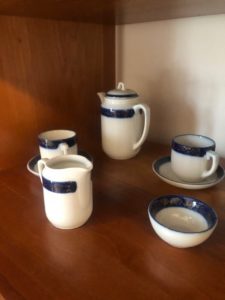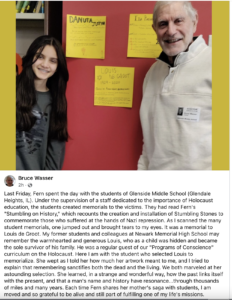Fern Schumer Chapman's Blog, page 9
March 29, 2023
Amazon is offering Brothers, Sisters, Strangers for $18.99 right now!
Amazon is offering BROTHERS, SISTERS, STRANGERS at a 32% discount right now. The hardcover is only $18.99 — $9 off the regular price.
The post Amazon is offering Brothers, Sisters, Strangers for $18.99 right now! appeared first on Fern Schumer Chapman.
March 21, 2023
Sibling Connections in Childhood Define Adult Relationships
“The influence brothers and sisters have on each other’s lives goes far beyond their own interactions,” Dr. Lewis writes. “Understanding the quality and emotional tone of the childhood relationship provides a rich source of information about and explanations for who siblings are today.”
The post Sibling Connections in Childhood Define Adult Relationships appeared first on Fern Schumer Chapman.
March 17, 2023
New review: The Sibling Estrangement Journal is “better than a glass of wine!”
Grateful to EstrangedSib for this five star review on Amazon 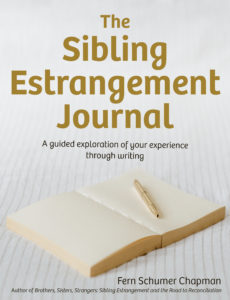 of THE SIBLING ESTRANGEMENT JOURNAL:
of THE SIBLING ESTRANGEMENT JOURNAL:
5.0 out of 5 stars Costs less than a glass of wine & much more effective
Reviewed in the United States on March 16, 2023
Verified PurchaseThis is the best money I’ve spent on coping with the emotions of my sibling totally estranging me more than two years ago now. I highly recommend this workbook! It’s the perfect mix of granting us to write about and explore our feelings AND benefit from Fern’s research and expertise on the subject. I appreciated the bulleted, well-researched lists covering everything from recognizing narcissistic traits to how to cope with ambiguous loss. Very helpful and the perfect companion to Fern Schumer Chapman’s “Brothers, Sister, Strangers: Sibling Estrangement and the Road to Reconciliation” book.The post New review: The Sibling Estrangement Journal is “better than a glass of wine!” appeared first on Fern Schumer Chapman.
March 2, 2023
“I had to tell someone before I die.”
After I gave a presentation about my mother’s Holocaust history at a senior residence in Chicago a few years ago, a man in his late 80s came up to me and whispered, “I want to tell you something.”
He grabbed my elbow and ushered me into a private corner of the room. “I’ve never told anyone this before.”
Tears streaked his face, and he bit his lip as he worked up the courage to confide in me. I wondered, what terrible act has he kept to himself for decades? What crime did he commit? Why is he telling me?
“I…I…” He wiped his nose and eyes with a handkerchief he held in his large, age-speckled hand. I stared at him, waiting for him to find his words. His hands were shaking.
“I…I was a liberator,” he said. Then, he studied my face to see how his statement had landed.
Stunned and confused, I wasn’t sure what to say. Finally, I asked, “Why didn’t you tell anyone?”
“What I saw…it was too horrible. I just couldn’t talk about it. I couldn’t say anything.”
His comment reminded me of a quote from Iris Chang’s book, The Rape of Nanking: The Forgotten Holocaust of World War II: “First they kill. Then they kill the memory of killing.” Chang’s book documents the Sino-Japanese War atrocities perpetrated by the invading Japanese army in Nanking in December 1937.
Those on all sides of horrifying crimes — perpetrators, victims, bystanders, and even liberators — often become unknowingly complicit in “killing the memory.” Too traumatized by what they’ve witnessed, they compartmentalize the experience and avoid any discussion of the topic.
On our first trip to her small town in Germany in 1990, my mother finally began to describe the trauma of leaving her parents when she was only 12 years old — 52 years after the devastating event that haunted all her days.
Those who have kept silent sometimes begin to talk as they sense their own mortality. Often, they don’t tell their own children; they tell their grandchildren.
“Why did you tell me?” I asked the man after his emotional confession. “Someone you only just met?”
“I had to tell someone before I die,” he sobbed.
“Now that you’ve told me,” I said, “I hope you’ll find the courage to tell your family. They need to know so they can better understand you.”
Photo credit: Wally Gobetz/Flickr Pro
Link to Is It Night or Day? on Barnes & Noble: https://www.barnesandnoble.com/w/is-it-night-or-day-fern-schumer-chapman/1142910808?ean=9798987259719
The post “I had to tell someone before I die.” appeared first on Fern Schumer Chapman.
How Siblings Contribute to “The Good Life”
The post How Siblings Contribute to “The Good Life” appeared first on Fern Schumer Chapman.
February 22, 2023
What can remain of a family murdered 52 years ago?
On my first trip to my mother’s town, Stockstadt am Rhein, I wondered if there would be any physical evidence of her past.
“What can remain of a family destroyed fifty-two years earlier?” I wrote in my memoir, Motherland. I learned then that the past has peculiar ways of inserting itself into the present.
When we first arrived in Germany, my mother turned to me and said, “We can’t leave Germany without seeing Mina.”
“Who’s Mina?” I asked.
“She was like a sister to me,” my mother replied. This was a surprising, given that the Holocaust had robbed her of so many family members and friends.
It turned out, Mina, a young Christian woman, had lived with my mother’s family, helping with chores in exchange for room and board. She came to love the family deeply, and her allegiance to the Westerfelds compelled her to speak out and defy the Nazis. During those difficult days in the 1930s, she often proclaimed, “I will not howl with those wolves!”
Ostracized for her beliefs, she fled Stockstadt and eventually made a life far away from the place where her family had lived for generations. When my mother and I found her in a tiny hamlet in the Odenwald Mountains, she told us a chilling story about a cherished child’s tea set.
“The tiny teapot, creamer, and cups came from your wealthy relatives who lived in Cologne,” Mina said. “The relatives had sent the set to us around Christmas one year. We begged your mother (my grandmother) to let us play with it. ‘No,’ she said. ‘The tea set was too fancy and fragile.’
“But in 1938, when she knew she had to send you (my mother) to America, she gave in. Just before you left, she allowed us to play with the tea set all the time.”
During our meeting in 1990, Mina reached into a paper bag, pulled out and unrolled wads of yellowed newspaper, revealing the small porcelain tea set with faded, hand-painted gold flowers painted on a royal blue border.
“I went to visit Frau Westerfeld in 1942, who, by then, was living in a ‘Jew-house’ in Darmstadt,” Mina explained. “The Nazis had forced all Jews in the area to live in one building.
“The last time I saw your grandmother, she was hungry and frail. She said she had to sell her children’s old toys for money to buy food. But when she came upon the tea set and remembered how we played, she looked at me, held up the teapot and said, ‘Maybe you would like these? Willst du sie haben?‘”
“The tea set belongs in your family,” Mina said to me during that meeting fifty-two years after her visit with Frau Westerfeld. Then she held up the teapot and asked, “Willst du sie haben?“
Link to the memoir, MOTHERLAND: https://www.amazon.com/Mother…/dp/0140286233/ref=sr_1_7…
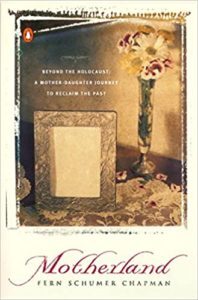
The post What can remain of a family murdered 52 years ago? appeared first on Fern Schumer Chapman.
February 13, 2023
Three Hidden Influences in Sibling Relationships
Personification, core beliefs, trauma bonding, oh my!
The post Three Hidden Influences in Sibling Relationships appeared first on Fern Schumer Chapman.
February 7, 2023
A remarkable experience at Glenside Middle School!
A student creates a paper stumbling stone to remember a Holocaust victim and teacher actually knew the man she memorialized!
The post A remarkable experience at Glenside Middle School! appeared first on Fern Schumer Chapman.
February 5, 2023
BBC-Wales explores sibling estrangement and the Royals divide
https://www.bbc.co.uk/sounds/play/m00...
The post BBC-Wales explores sibling estrangement and the Royals divide appeared first on Fern Schumer Chapman.
February 2, 2023
Former Jewish homes in Germany: “I felt like a thief!”
Most homes in Germany are handed down from one generation to the next. My mother’s family, the Westerfelds, had built their house in Stockstadt am Rhein in 1721, and they lived in it for 200 years. In 1939, when my grandparents were desperate for money, one of the town’s prominent Nazis pressured the family into selling the Westerfeld home for next to nothing. Eventually, the home was handed down to the son of the Nazi.
After the Holocaust, many “Jewish houses” in Germany were abandoned and sat vacant for years. Some became unintentional monuments to the families who once lived in them. In Stockstadt, many said they lived uneasily with the “Westerfeld home.” Whenever residents walked by the house, they remembered the two little girls — my mother and aunt — who once played there.
In the town of Büttelborn, one family who have rented a former Jewish home since 1978 became uncomfortable when they learned about the original owners. “We began to wonder what happened to them,” the tenant told me.
The man who grew up in the home returned for a visit when he was 79 years old. He told the current residents that the Nazis had murdered his parents, however, he had escaped to Palestine in1936.
“It was strange when he was here because this was his house, his birthplace, the place of his youth,” the tenant said. “He stood for a moment on the last step of the stairs. It was emotional for him.”
As the tenant watched this man as he was flooded with memories, she said she felt terribly guilty. “I know that there is no reason to think it,” she said, “but I felt like a thief.”
When my mother’s cousin returned to his home in Worfelden, he wanted to get a photograph of his childhood home. “As I held up my camera,” he said, “a man stepped in front of me and asked, ‘Why are you photographing my home?’ ‘Well,’ I said, ‘it used to be my home.’”
The former Erfelden home of the Jewish dry goods merchant has been sold many times. “It keeps turning over,” said a life-long resident of the town. “Nobody wants to live in it.”
Even though Germans are dedicated to preserving old buildings, Stockstadt’s Town Council granted a rare variance allowing the current owners to tear down the Westerfeld home. The new owners built a building – for a shop and residence — where the Westerfeld home once stood.
When I spoke to the new owner, I explained that the Westerfelds once owned the property. “My father never told us anything,” he claimed. “We only found out about your family when we read your book, Motherland. We were shocked to learn about the house and its history.”
The post Former Jewish homes in Germany: “I felt like a thief!” appeared first on Fern Schumer Chapman.

